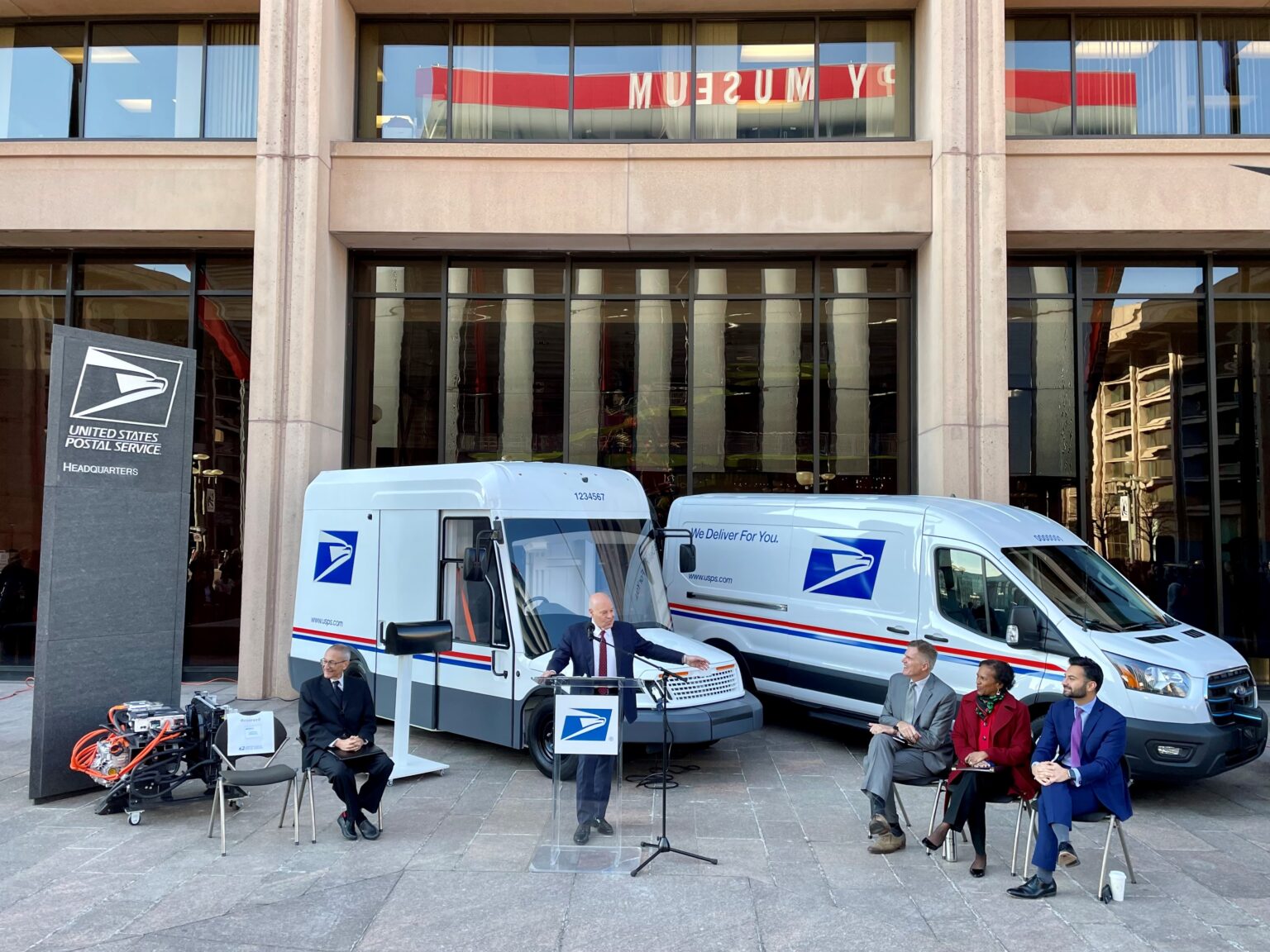Congressional Moves Threaten U.S. Postal Service’s Electric Vehicle Transition
A little-noticed clause within the sweeping tax and immigration legislation championed by President Donald Trump and Republican lawmakers could significantly undermine the U.S. Postal Service’s ongoing efforts to modernize its fleet with electric vehicles (EVs). This provision would require the federal government to reverse billions of dollars invested in EV procurement, effectively reversing the Biden administration’s climate initiatives within the postal sector and inflicting a substantial financial blow.
Postal Service’s Ambitious Electric Vehicle Initiative
In 2022, the Postal Service launched an extensive plan to acquire 66,000 electric delivery trucks, many of which are custom-designed “Next Generation Delivery Vehicles” produced by defense contractor Oshkosh. Alongside these, the agency purchased hundreds of Ford E-Transit vans and invested over half a billion dollars in retrofitting aging sorting facilities to support electric and low-emission vehicles. The total projected expenditure for this transition is approximately $9.6 billion, with around $3 billion coming directly from taxpayer funds to bridge the cost gap between traditional gasoline-powered trucks and their electric counterparts. The remaining funds are sourced from the Postal Service’s own revenue streams, primarily generated through postage sales.
Legislative Proposals to Reclaim and Resell EV Assets
The Senate version of the legislation, dubbed the “One Big Beautiful Bill,” proposes that the General Services Administration (GSA) take control of nearly 7,200 newly acquired postal EVs and their associated infrastructure, subsequently auctioning these assets off. However, this plan is unlikely to yield significant revenue. Industry experts note that there is minimal private-sector interest in used postal trucks, and the specialized charging infrastructure-already installed at postal facilities-has little resale value, especially since much of it is embedded underground or integrated into parking lots.
Peter Pastre, Vice President of Government Relations at the Postal Service, emphasized that “the proceeds from auctioning these vehicles and infrastructure would be negligible. Much of the infrastructure is buried, and used charging stations are not marketable.” This move appears primarily aimed at reducing government spending rather than recouping investments.
Political Rationale and Broader Fiscal Context
Senator Rand Paul (R-Kentucky), who chairs the Senate Homeland Security and Governmental Affairs Committee, summarized the legislation’s intent as a measure to “eliminate unnecessary costs and refocus USPS on its core mission of mail delivery, rather than environmental initiatives promoted by the Biden administration.” The proposal aligns with broader Republican efforts to offset the nearly $4 trillion cost of their tax policies through significant spending cuts.
In particular, the legislation seeks to slash over $1 trillion from social safety net programs and dismantle much of the Biden-era Inflation Reduction Act, which represented the largest federal investment in climate action to date. The Act included substantial funding for EV adoption and clean energy initiatives, with the Postal Service’s EV procurement seen as a key component of this strategy.
Impact on Climate Goals and Domestic EV Market
The Biden administration’s climate agenda aimed to stimulate the domestic electric vehicle industry, both for commercial fleets and private consumers. The Postal Service’s transition to electric trucks was viewed as a critical step toward reducing emissions from one of the country’s largest vehicle fleets. However, the Republican-led legislation effectively eliminates most of these incentives, either immediately or gradually over several years, threatening to stall progress on national climate goals.
Financial and Operational Challenges for the Postal Service
The Postal Service’s current fleet, composed of “Long Life Vehicles” manufactured between 1987 and 1994, is aging and increasingly unreliable. Many trucks are so outdated that parts must be reverse-engineered, and some have even caught fire due to decades of overuse. The agency’s efforts to replace these vehicles have faced numerous setbacks, including delays and engineering issues with Oshkosh, which has struggled to meet delivery deadlines and has faced internal disputes and accusations of dishonesty.
Originally scheduled to deliver approximately 3,000 vehicles by the end of 2024, Oshkosh has only supplied around 100 units so far, and costs have risen significantly. After congressional approval of funding, Oshkosh imposed an “Inflation Reduction Act premium adjustment,” adding over half a billion dollars to the purchase price, further inflating the program’s costs.
Political and Public Reactions
Critics argue that the proposed reversal of EV investments constitutes a waste of taxpayer dollars. Some GOP figures, such as Rep. Marjorie Taylor Greene (R-Georgia), have dismissed the program as a “Green New Deal scam,” accusing it of unnecessary government spending. Elon Musk, then an ally of Trump and a proponent of government efficiency, publicly criticized the high costs per truck, calling them “crazy.”
The Road Ahead for Postal Fleet Modernization
Stakeholders from the Postal Service are scheduled to testify before a House subcommittee to discuss the agency’s financial health and operational challenges. The future of the postal EV program remains uncertain amid legislative debates, but the need for a modern, reliable delivery fleet is urgent. The aging trucks not only hinder efficiency but also pose safety risks, underscoring the importance of continued investment in sustainable transportation solutions.
As the legislative landscape evolves, the Postal Service’s efforts to transition to electric vehicles highlight the broader tension between fiscal conservatism and environmental sustainability-an issue that will shape the future of federal transportation policies and climate commitments.

